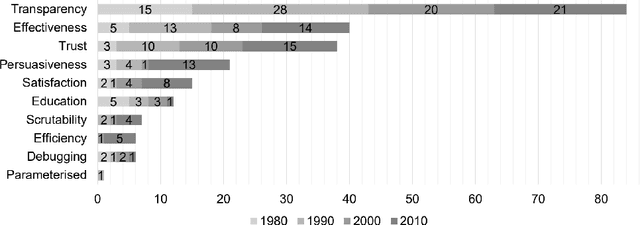Hofit Wasserman Rozen
The Case Against Explainability
May 20, 2023

Abstract:As artificial intelligence (AI) becomes more prevalent there is a growing demand from regulators to accompany decisions made by such systems with explanations. However, a persistent gap exists between the need to execute a meaningful right to explanation vs. the ability of Machine Learning systems to deliver on such a legal requirement. The regulatory appeal towards "a right to explanation" of AI systems can be attributed to the significant role of explanations, part of the notion called reason-giving, in law. Therefore, in this work we examine reason-giving's purposes in law to analyze whether reasons provided by end-user Explainability can adequately fulfill them. We find that reason-giving's legal purposes include: (a) making a better and more just decision, (b) facilitating due-process, (c) authenticating human agency, and (d) enhancing the decision makers' authority. Using this methodology, we demonstrate end-user Explainabilty's inadequacy to fulfil reason-giving's role in law, given reason-giving's functions rely on its impact over a human decision maker. Thus, end-user Explainability fails, or is unsuitable, to fulfil the first, second and third legal function. In contrast we find that end-user Explainability excels in the fourth function, a quality which raises serious risks considering recent end-user Explainability research trends, Large Language Models' capabilities, and the ability to manipulate end-users by both humans and machines. Hence, we suggest that in some cases the right to explanation of AI systems could bring more harm than good to end users. Accordingly, this study carries some important policy ramifications, as it calls upon regulators and Machine Learning practitioners to reconsider the widespread pursuit of end-user Explainability and a right to explanation of AI systems.
 Add to Chrome
Add to Chrome Add to Firefox
Add to Firefox Add to Edge
Add to Edge